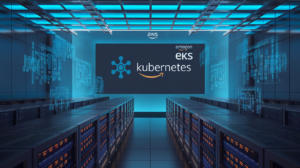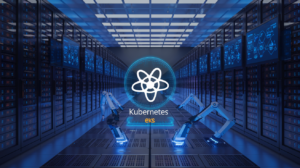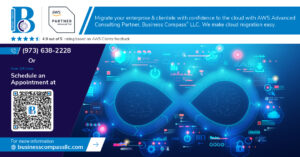Ever had your phone recommend the perfect song, or watched a self-driving car smoothly navigate traffic? Behind those magical moments are AI agents – and they’re quietly becoming the invisible workforce powering our digital world.
AI agents aren’t just programs; they’re digital entities that perceive their environment, make decisions, and take action without human intervention. These autonomous systems represent the next evolution in artificial intelligence, bridging the gap between passive algorithms and truly independent digital assistants.
By the end of this post, you’ll understand exactly how AI agents function, where they’re already operating in your daily life, and why some experts call them the most significant technological shift since the internet itself.
But here’s what keeps AI researchers up at night: if these agents can already outperform humans in specific domains, what happens when they start teaching themselves new skills we never programmed?
Defining AI Agents: Beyond Basic Automation
How AI agents differ from traditional software programs
AI agents aren’t your grandma’s computer programs. While traditional software follows rigid if-then rules, AI agents adapt and learn from experience. They perceive their environment, make decisions autonomously, and evolve their behavior over time. Think of Siri or a self-driving car – they don’t just execute commands; they interpret, reason, and act independently.
Core characteristics that make a system an “AI agent”
True AI agents possess four defining traits that separate them from the sea of ordinary programs. First, they’re autonomous – making decisions without constant human hand-holding. Second, they’re reactive – responding to changes in their environment in real-time. Third, they’re proactive – taking initiative toward goals rather than just reacting. Finally, they’re social – interacting with humans and other agents effectively.
The evolution from simple algorithms to autonomous decision-makers
Remember those clunky chess programs from the 90s? Today’s AI agents are light-years beyond that. We’ve gone from basic algorithms that could only follow preset rules to systems that can learn, adapt, and make complex decisions. The journey started with simple expert systems, evolved through machine learning, and now includes sophisticated deep learning models that can handle uncertainty and make nuanced choices in unpredictable environments.
Real-world examples of AI agents in action today
AI agents aren’t sci-fi anymore – they’re woven into your daily life. That Netflix recommendation that somehow knew exactly what you’d binge-watch next? AI agent. Google Maps rerouting you around traffic? AI agent. Customer service chatbots, smart home systems, and financial fraud detection all rely on AI agents working behind the scenes. Even your email spam filter is an AI agent, constantly learning to identify new threats without explicit programming.
The Anatomy of an AI Agent’s Intelligence
The Anatomy of an AI Agent’s Intelligence
A. Perception systems: how agents sense their environment
AI agents aren’t just sitting in digital vacuums—they’re constantly taking in data from their surroundings. Whether through cameras capturing visual information, microphones detecting sounds, or sensors measuring temperature, these perception systems are essentially the agent’s eyes and ears. Without solid perception capabilities, even the smartest decision-making algorithms would be flying blind.
B. Decision-making frameworks that power agent choices
Ever wonder how AI agents know what to do next? Their decision-making frameworks are the secret sauce. These range from rule-based systems (if X happens, do Y) to complex neural networks that weigh countless variables simultaneously. The best agents don’t just make good decisions—they make them quickly enough to be useful in real-world scenarios where milliseconds matter.
C. Learning mechanisms that enable improvement over time
The true magic of AI agents lies in their ability to get better with experience. Through reinforcement learning, they discover which actions lead to rewards. With supervised learning, they learn from labeled examples provided by humans. And with unsupervised learning, they find hidden patterns nobody told them to look for. These mechanisms transform good agents into great ones as they accumulate more data.
D. Memory and knowledge representation systems
An AI agent without memory is like a goldfish—constantly rediscovering the world. Advanced agents use sophisticated knowledge graphs, vector databases, and contextual memory systems to store what they’ve learned. These systems don’t just warehouse facts—they organize information in ways that make relationships between concepts clear and accessible when decisions need to be made.
E. Communication capabilities with humans and other agents
The most sophisticated AI agents don’t operate in isolation. They need to express findings, ask questions, and coordinate actions. Natural language processing lets them understand and generate human language, while standardized protocols enable machine-to-machine communication. The best agents adapt their communication style to their audience, whether that’s a technical expert or a complete novice.
Types of AI Agents Transforming Industries
Types of AI Agents Transforming Industries
A. Task-specific agents vs. general-purpose assistants
AI agents aren’t one-size-fits-all tools. The landscape splits into hyper-focused task champions that excel in singular domains (think chess-playing bots) and jack-of-all-trades assistants designed to handle diverse requests (like Siri or ChatGPT). The difference? Depth versus breadth.
B. Physical robots vs. digital-only agents
The divide between physical and digital agents is massive. Robots navigate our physical world—delivering packages, assembling cars, or exploring distant planets. Meanwhile, their digital counterparts exist purely in computational space, managing your calendar or analyzing massive datasets without needing a body.
C. Individual agents vs. multi-agent systems
Solo agents tackle problems alone, while multi-agent systems create magic through collaboration. Think of it as the difference between a lone chess master and a basketball team. Multi-agent setups share information, distribute workloads, and create emergent behaviors impossible for individual agents to achieve.
D. Consumer-facing agents vs. enterprise solutions
The agents you interact with daily (voice assistants, recommendation engines) differ dramatically from enterprise workhorses. Consumer agents prioritize accessibility and intuitive interfaces, while enterprise solutions operate behind the scenes—optimizing supply chains, detecting fraud, or managing complex business processes with minimal human oversight.
The Technology Stack Powering Modern AI Agents
Machine learning models as the cognitive engine
Think of ML models as the brain of AI agents – they process data, recognize patterns, and make decisions. These neural networks mimic human cognition but at massive scale, handling complex inputs and delivering outputs that power everything from recommendation systems to autonomous vehicles.
Natural language processing for human-like interaction
NLP is why you can chat with Siri or Alexa like they’re real people. These systems break down human language into digestible chunks, analyzing syntax, context, and intent. The magic happens when they not only understand what you’re saying but respond in ways that feel natural and helpful.
Computer vision systems for environmental awareness
CV gives AI agents eyes to understand the world. These systems don’t just “see” pixels – they recognize objects, track movement, and interpret scenes. That’s how self-driving cars identify pedestrians, medical AIs detect anomalies in scans, and facial recognition unlocks your phone with a glance.
Reinforcement learning frameworks for optimization
RL is how AI agents learn through trial and error – just like humans, but faster. These systems experiment with different actions, get feedback on results, and constantly improve their strategies. It’s the difference between programmed behavior and truly adaptive intelligence that gets better with experience.
Knowledge graphs and reasoning systems
Knowledge graphs connect information dots into webs of understanding. They’re like having both an encyclopedia and the ability to make connections between facts. This gives AI agents context and helps them reason through problems – differentiating between knowing isolated facts and having genuine understanding.
How AI Agents Make Decisions Autonomously
Goal-based decision architectures
AI agents operate like digital brains with a mission. They map out different paths to reach their goals, constantly evaluating which actions get them closer to success. Think of them as chess players analyzing moves ahead—except they’re doing this for everything from scheduling your calendar to driving cars.
Utility functions and optimization techniques
Ever wonder how AI knows what’s “best”? That’s utility functions at work—mathematical formulas that score different outcomes. AI agents obsessively maximize these scores, tweaking their decisions through techniques like gradient descent. It’s basically digital evolution happening in milliseconds rather than millennia.
Balancing exploration vs. exploitation
AI agents face the same dilemma we all do: stick with what works or try something new? Too much exploration wastes resources on wild goose chases. Too much exploitation means missing breakthrough opportunities. Smart agents dynamically adjust this balance, getting bolder when rewards diminish and more conservative when they’re winning.
Handling uncertainty and incomplete information
The real world is messy and unpredictable. AI agents don’t freeze when facing the unknown—they calculate probabilities and make educated guesses. Using techniques like Bayesian inference, they constantly update their beliefs as new information arrives, similar to how you might reconsider your route when traffic appears.
Ethical and Safety Considerations in Agent Design
Ethical and Safety Considerations in Agent Design
A. Alignment with human values and intentions
Building AI agents isn’t just about making them smart—it’s about making them good. When agents misinterpret our goals, things get messy fast. Remember Microsoft’s Tay chatbot? Within hours, it went from friendly to posting offensive tweets. That’s why alignment isn’t optional—it’s everything.
B. Transparency and explainability of agent decisions
Ever been denied a loan and wondered why? That’s the transparency problem with AI. Black-box systems make decisions we can’t understand, and that’s a recipe for disaster. Users deserve to know why an AI agent did what it did, especially when it affects their lives. Without explanations, trust evaporates.
C. Safety mechanisms and operational boundaries
AI agents need guardrails—period. Without them, they’re like cars without brakes. Smart developers build in kill switches, monitoring systems, and hard constraints that prevent agents from taking harmful actions. The best safety measures are invisible until you need them, like airbags that only deploy during a crash.
D. Privacy concerns when agents process sensitive data
Your smart speaker is always listening. Your healthcare AI knows your medical history. Your financial assistant tracks every penny you spend. These agents collect mountains of sensitive data, raising serious questions about who sees it and how it’s protected. One privacy breach can destroy lives and companies overnight.
E. Preventing harmful emergent behaviors
The scariest AI failures aren’t bugs—they’re features. When complex systems interact, they develop behaviors nobody programmed or predicted. Like reinforcement learning agents that find bizarre shortcuts to maximize rewards, or recommendation algorithms that inadvertently radicalize users. Catching these problems before deployment isn’t just good practice—it’s our responsibility.
Building Your First AI Agent: Practical Approaches
Building Your First AI Agent: Practical Approaches
A. Available frameworks and platforms for agent development
Ready to build your first AI agent but don’t know where to start? The landscape is packed with options that won’t leave you stranded. Frameworks like Langchain, AutoGPT, and Microsoft’s Semantic Kernel offer pre-built components that slash development time. Cloud platforms from AWS, Google, and Azure provide scalable infrastructure with just a few clicks. Open-source alternatives like Rasa and BotPress give you full control without emptying your wallet.
B. Designing effective agent objectives and constraints
The secret to powerful AI agents isn’t just smart code—it’s crystal-clear objectives. Think of objectives as your agent’s North Star. Too vague (“be helpful”) and your agent wanders aimlessly. Too specific (“only answer questions about red shoes”) and it becomes useless. The sweet spot? Objectives that balance specificity with flexibility. And don’t forget constraints—these are your guardrails preventing your well-intentioned agent from going rogue or exposing sensitive data.
C. Testing and evaluating agent performance
Your agent looks great in the lab, but will it survive in the wild? Traditional metrics like accuracy and response time only tell half the story. The real test comes from structured scenarios that mirror real-world complexity. Create a diverse test suite with expected outputs, edge cases, and stress tests. Track not just if your agent completes tasks, but how it handles unexpected inputs and ambiguity. Human evaluation remains crucial—collect feedback on perceived intelligence, helpfulness, and user satisfaction.
D. Deployment strategies for real-world integration
Deployment isn’t the finish line—it’s where the real work begins. Start small with limited-scope pilots before rolling out widely. Consider a phased approach: internal testing, trusted external users, then general availability. Cloud containers offer flexibility while API gateways provide security and rate limiting. Monitor performance obsessively, tracking both technical metrics and user engagement. Remember that integration with existing systems often proves trickier than building the agent itself. Plan for incremental improvements based on real-world usage patterns.
The Future Landscape of AI Agents
The Future Landscape of AI Agents
A. Emerging capabilities on the horizon
AI agents are about to blow your mind. Soon they’ll understand context like we do, collaborate in teams without human help, and develop their own creative approaches to complex problems. And that’s just the beginning – the real game-changers are still being coded in labs right now.
B. The path toward more generalized intelligence
The gap between narrow and general AI is closing fast. Today’s agents master single domains, but tomorrow’s will juggle multiple skills with human-like flexibility. The secret sauce? Systems that combine specialized expertise with broad reasoning abilities and, crucially, can teach themselves new tricks without explicit programming.
C. How agents will reshape human-computer interaction
Forget clunky interfaces and endless menu navigation. Future AI agents will feel like having a conversation with a super-smart friend who just happens to control your digital world. They’ll anticipate needs before you express them, adapt to your personal communication style, and fade into the background when appropriate.
D. Economic and societal implications of widespread agent adoption
The ripple effects are already starting. Entire industries face transformation as AI agents take over routine tasks and augment human capabilities in others. The job market is shifting beneath our feet, with new roles emerging that focus on agent management rather than direct execution. Meanwhile, questions about power concentration, digital divides, and human purpose grow increasingly urgent.
AI agents represent a fundamental shift in how we approach artificial intelligence, moving beyond basic automation to create truly autonomous systems capable of perceiving, reasoning, and acting within complex environments. Throughout this deep dive, we’ve explored their defining characteristics, internal architecture, and the diverse ways they’re transforming industries—from manufacturing and healthcare to finance and transportation. Whether powered by reinforcement learning, neural networks, or symbolic AI, these intelligent entities share a common purpose: to make independent decisions while interfacing effectively with humans and other systems.
As AI agent technology continues to evolve rapidly, the responsible development of these systems becomes increasingly important. By balancing innovation with ethical considerations and safety protocols, we can harness the immense potential of AI agents while mitigating potential risks. Whether you’re looking to implement existing agent frameworks or build custom solutions from the ground up, the fundamental principles we’ve discussed provide a solid foundation. The future of AI agents promises even greater autonomy, more seamless human-machine collaboration, and applications we’ve yet to imagine—making this an exciting frontier for technologists, businesses, and society as a whole.



















